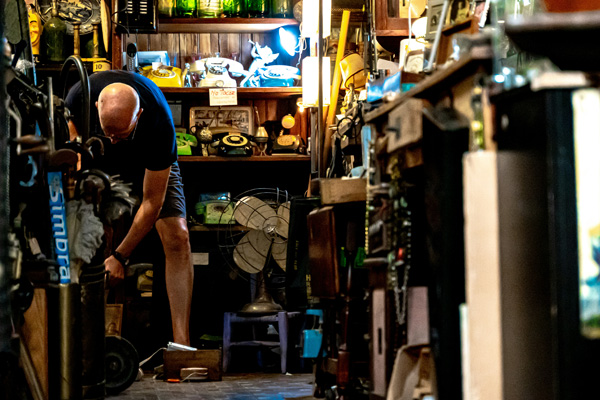
By Joanie Bentz, M.Ed., LBS, CCBP
An A&E reality television series called Hoarders debuted in 2009 and is still popular today. If you have viewed any of the episodes, you probably have a good idea of how hoarding disorder can escalate over time and become so severe that it causes environmental and health dangers, which impair the person from functioning and thriving normally.
Typically, on the show, concerned family and friends intervene and seek treatment for the hoarder, and most of the time, with intensive support, the hoarder agrees to address their disorder. The home is cleared out, and the hoarder receives therapy to address the root causes of the hoarding and begins to heal.
Classical hoarders usually will take ownership of their disorder at some point and have a desire to improve. But some hoarders are also narcissists, which complicates the picture.
Case study
Some time ago, I had a client named “Dana” who was concerned about her younger sister, “Monica,” whom she believed had hoarding disorder. Their father, who was living in a senior home, was diagnosed with hoarding disorder and they shared similar behaviors regarding their possessions and the continued acquisition of objects. There were only a few rooms left in his home that were not stuffed with useless items, both very large and very small.
Monica’s home was also cluttered with vertical piles of boxes, trinkets, papers, books, magazines and unopened mail that crowded out sitting space to read and eat and overflowed into other rooms.
Dana was seeking ways to help her sister and had exhausted all approaches. When Dana requested to speak to Monica privately, Monica would make excuses and stonewall Dana’s efforts by not responding.
Dana suspected that her sister also had a personality disorder. She exhibited unstable behaviors such as normalizing conflict, needing to have the upper hand, and manipulating people when interacting with them. To make matters worse, Dana recalled that as a child, Monica exhibited oppositional and defiant behavior to her parents, family and other authority figures. It seems that a lack of peace followed her everywhere.
Can someone be a hoarder and also have narcissistic personality disorder? Dana was witnessing a tumult of confusing behaviors in her sister, and she was correct in her speculation that these two disorders can overlap.
Hoarding disorder recognized
Hoarding disorder was finally recognized as a distinct psychiatric diagnosis in 2013 with the publication of the fifth edition of the Diagnostic and Statistical Manual of Mental Disorders (DSM-5).
According to OurMental.health, a systematic review and meta-analysis found that the rates of hoarding disorder in the general population ranging from 1.5% to 6%, with variations depending on assessment methods and population samples.
Hoarding does not have to limited to objects. A person can hoard people, memories, and ideas, such as internalized representations of people. This is often demonstrated through their obsessions with photographs of people and anything associated with them. It’s a maladaptive coping mechanism for their unstable sense of self and inability to establish genuine connections with others.
For more information on hoarding disorder, read:
Hoarding Disorder: A new diagnosis in the DSM-5, on Counseling.org
NPD and hoarding disorder intersect
In some cases, the hoarder will not accept help, blame everyone else for their problems and cause dissension within their family. They will only maintain relationships with people that enable their hoarding or who know nothing of their problem.
Frequently, stubborn hoarders have grandiose justifications for keeping their useless items. These hoarders usually have what is called a “co-occurring disorder” and it is usually a cluster B disorder, like narcissism.
At present, there is limited direct academic research specifically on “narcissistic hoarders” as a distinct clinical group. Some type of trauma and possibly genetics are seen as catalysts for developing hoarding disorder. Interestingly, many hoarders are narcissists as well, but not all narcissists are hoarders.
Commonalities and differences
Narcissism and hoarding pathologies share some of the same traits:
- Emotional attachment to possessions/objects, which are seen as extensions of themselves.
- Possessions are used to reflect of sense of self-importance.
- Power and control are at the root of narcissism, and hoarders tend to control their environment through possessions.
- Lack of insight (clinical delusion) seems to be the core of both pathologies.
Here’s how traits and behavior for both pathologies can vary:
- Insight into problem: Varies from good to poor among classical hoarders. Among narcissists who hoard, insight is generally poor (delusional).
- Shame/embarrassment: Common among classical hoarders with good insight. Rare among narcissistic hoarders — they may become defensive.
- Concern about others knowing: Often high among classical hoarders if they have good insight. Generally low among narcissistic hoarders, who may deny or justify their behavior.
- Motivation for hoarding: Among classical hoarders, it’s anxiety, attachment and control. Among narcissistic hoarders, it’s grandiosity, control and self-image.
Energy for objects, not people
You might notice a narcissistic hoarder has no real friends or connections. All of their energy and emotion is directed toward what they acquired, and minimal effort is put into interpersonal relationships.
This is a key element to the narcissistic hoarder’s behavior. They see their possessions as an outward sign of their intelligence, value and superiority, and the hoarding satisfies the need for control, which both disorders share.
Life changes reveal severity of disorder
When Dana’s family had to clean out her father’s house, Dana noticed her sister lacked the motivation to get the job done.
Monica was not putting things in the garbage, and instead, would ask another person to do it. She could not find it within herself to actually throw anything out in the trash, nor take the trash outside. Frequently, she would move junk around to make it seem like she was discarding items.
Because of her narcissist hoarding disorder, Monica had a strong emotional bond with her father’s possessions. She wanted to control the fate of his junk to elevate her sense of self-worth and superiority by taking it home and hoarding his collection as well.
Psychological and functional outcomes
Classical hoarders may acknowledge their problem eventually, with much intervention. Cognitive behavior therapy is often used to reframe unhelpful and destruction thoughts that feed into the hoarding mindset. The outlook is good for classical hoarders who receive regular therapeutic supports. Classical hoarders self-sooth and seek comfort through the hoarding process.
On the other hand, a narcissistic hoarder uses their possessions as a status symbol. They often see their disorder as an achievement, which creates a barrier to mental health treatment. It’s like they are consuming and not creating which would be possible through the pursuit of self-fulfilling activities. Creative endeavors require physical space and heart space, and instead they are cluttering both. Narcissistic hoarders will continually deny their dysfunction and their compulsion to acquire more objects usually increases over time.
This harmful cycle will cause a gradual deterioration of overall well-being as the narcissistic hoarder ages while the physical barriers to change create a challenge to treatment. The prognosis is guarded to poor in effectively managing their disorder.
Pathological denial and resistance
What if a narcissistic hoarder never acknowledges their problem? Pathological denial entrenched in narcissistic defenses gets in the way of self-examination. This afflicted individual will have to come to face to face one day with the isolation caused by their refusal to look inward, and their living space will eventually deteriorate into a health hazard.
We can only hope that through some crack in their narcissistic shields, the narcissistic hoarder will accept the help and love that others want to give them, and receive a second chance to live a full, healthy life minus the useless and meaningless junk weighing down their hearts and souls.
For more information, read:
Narcissist Hoarders: The complex intersection of personality and behavior, on Neurolaunch.com.
































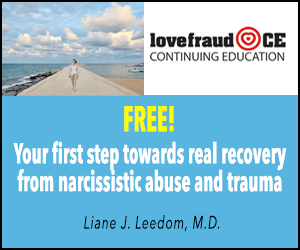
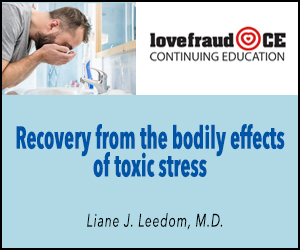
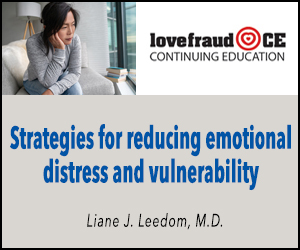

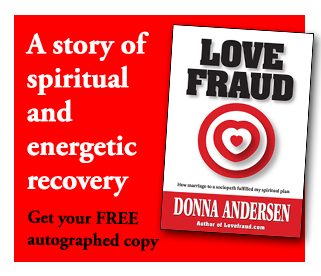
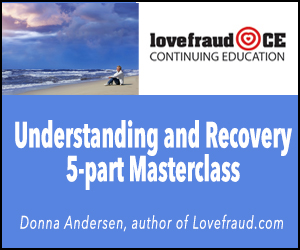
 Asking the wrong question about coercive controllers
Asking the wrong question about coercive controllers